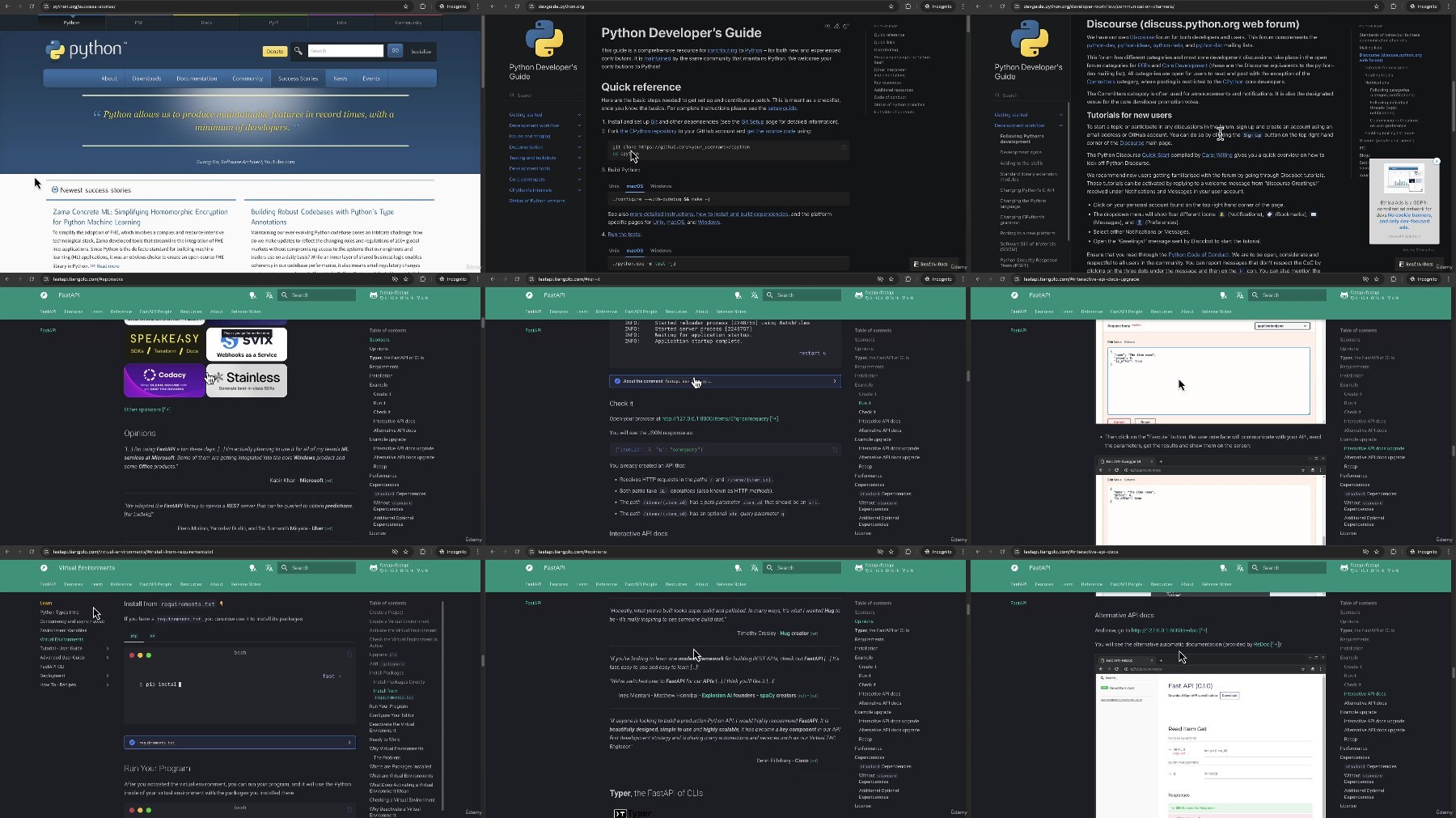[Ai] Build A Object Recognition App With Python & Angular
![[Ai] Build A Object Recognition App With Python & Angular](https://i124.fastpic.org/big/2024/1117/97/be86ee8d509e52da69ad9dd3de49a697.jpg)
[Ai] Build A Object Recognition App With Python & Angular
Published 10/2024
MP4 | Video: h264, 1920x1080 | Audio: AAC, 44.1 KHz
Language: English | Size: 1.64 GB | Duration: 3h 1m
Develop AI-driven web apps using FastAPI and Angular. Learn Machine Learning with Python for developers.
What you'll learn
AI and Machine Learning Fundamentals with hands on
Basic Programming in Python and Typescript
Handle frameworks like FastAPI and Angular
Build real world modern object recognition application
Requirements
No programming experience required. Only computer and access to internet
Description
[AI] Create a Object Recognition Web App with Python & AngularBuild AI-driven web apps with FastAPI and Angular. Discover Machine Learning with Python for developers.This comprehensive course, "[AI] Create a Object Recognition Web App with Python & Angular," is designed to empower developers with the skills to build cutting-edge AI-powered applications. By combining the power of FastAPI, TensorFlow, and Angular, students will learn to create a full-stack object recognition web app that showcases the potential of machine learning in modern web development.Throughout this hands-on course, participants will dive deep into both backend and frontend technologies, with a primary focus on Python for AI and backend development, and TypeScript for frontend implementation. The course begins by introducing students to the fundamentals of machine learning and computer vision, providing a solid foundation in AI concepts essential for object recognition tasks.***DISCLAIMER*** This course is part of a 3 applications series where we build the same app with different technologies including Angular, React and a cross platform Mobile App with React Native CLI. Please choose the frontend framework that fits you best.Students will then explore the FastAPI framework, learning how to create efficient and scalable REST APIs that serve as the backbone of the application. This section will cover topics such as request handling, data validation, and asynchronous programming in Python, ensuring that the backend can handle the demands of real-time object recognition processing.The heart of the course lies in its machine learning component, where students will work extensively with TensorFlow to build and train custom object recognition models. Participants will learn how to prepare datasets, design neural network architectures, and fine-tune pre-trained models for optimal performance. The course will also cover essential topics such as data augmentation, transfer learning, and model evaluation techniques.On the frontend, students will utilize Angular and TypeScript to create a dynamic and responsive user interface. This section will focus on building reusable components, managing application state with services and observables, and implementing real-time updates to display object recognition results. Participants will also learn how to leverage Angular's powerful features such as dependency injection, routing, and reactive forms to create a robust and scalable frontend application.Throughout the course, emphasis will be placed on best practices in software development, including code organization and project structure. Students will explore Angular's modular architecture and learn how to effectively organize their application into feature modules and shared modules. They will also gain insights into deploying AI-powered web applications, considering factors such as model serving, scalability, and performance optimization.By the end of the course, participants will have created a fully functional object recognition web app, gaining practical experience in combining AI technologies with modern web development frameworks. This project-based approach ensures that students not only understand the theoretical concepts but also acquire the hands-on skills necessary to build sophisticated AI-driven applications in real-world scenarios.Whether you're a seasoned developer looking to expand your skill set or an AI enthusiast eager to bring machine learning models to life on the web, this course provides the perfect blend of theory and practice to help you achieve your goals in the exciting field of AI-powered web development using Angular and Python.Cover designed by FreePik
Overview
Section 1: Introduction
Lecture 1 Introduction
Lecture 2 AI, Machine Learning and Deep Learning
Lecture 3 Convulent Neural Networks (CNNs)
Lecture 4 Installing VSCode
Lecture 5 VSCode Extensions
Lecture 6 Best way to take advantage of this course
Section 2: FastAPI and Python Setup
Lecture 7 What is Python and FastAPI?
Lecture 8 Installing Python for MacOS
Lecture 9 Installing Python for Windows
Lecture 10 Installing and running FastAPI
Lecture 11 Another Example Route
Lecture 12 Running the server with Uvicorn
Lecture 13 Installing packages using requirements.txt
Section 3: Angular Application Setup
Lecture 14 What is Angular and Typescript?
Lecture 15 Angular CLI and creating first app
Lecture 16 Creating ImageControl Component
Lecture 17 First Template and Conditions
Lecture 18 Inputs and Continuing Template
Section 4: Creating and Setting Prediction Model
Lecture 19 Explaining TensorFlow, SSDMobileNet V2 and Coco Dataset
Lecture 20 Adding MobileNetV2 SSD and COCO Model DataSet
Lecture 21 Loading PreTrained Model Into App
Lecture 22 Run Inference Function
Lecture 23 Predict Route
Lecture 24 Label_Map
Lecture 25 Returning Results from Predict Route
Lecture 26 Testing our Route
Section 5: Adding Server Data to Frontend
Lecture 27 Creating Angular Service
Lecture 28 Prediction Type
Lecture 29 Upload Image Function in Service
Lecture 30 Importing Service into Component
Lecture 31 Finalizing Template
Lecture 32 Provide HTTPClient
Lecture 33 OnFile Selected
Lecture 34 UploadImage Function
Lecture 35 API Key
Lecture 36 Handling Image Upload and Errors
Lecture 37 Adding UploadImage to Template and NetworkError
Lecture 38 Allow CORS
Lecture 39 Testing the Results
Section 6: Additional Lectures
Lecture 40 Splitting into smaller components
Lecture 41 Angular Inputs
Lecture 42 Prediction Errors and Mistakes
Lecture 43 Use cases and Limitations
Section 7: Bonus
Lecture 44 Bonus
Beginner Python, Frontend and AI developers. Students with interest in how AI works

FileAxa
RapidGator
FileStore
TurboBit
